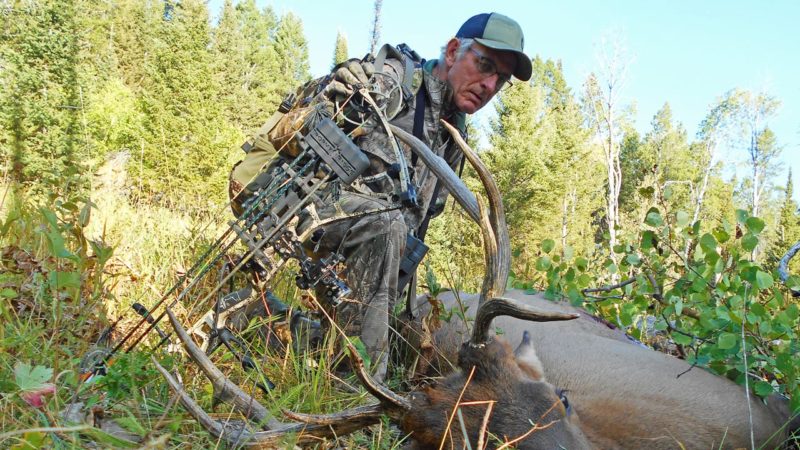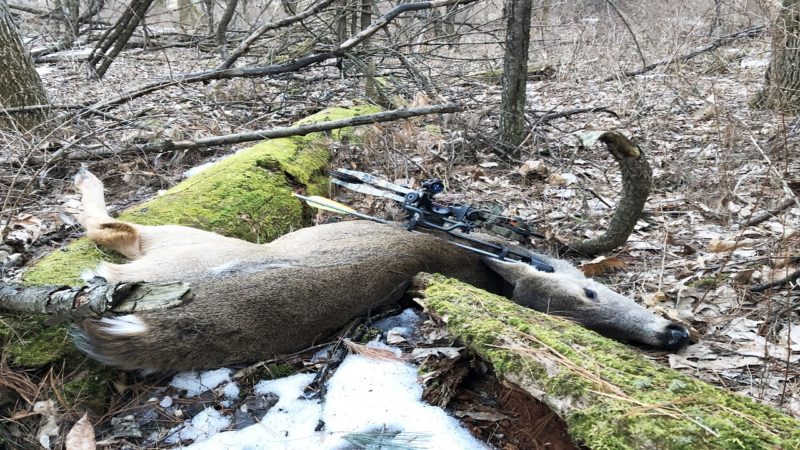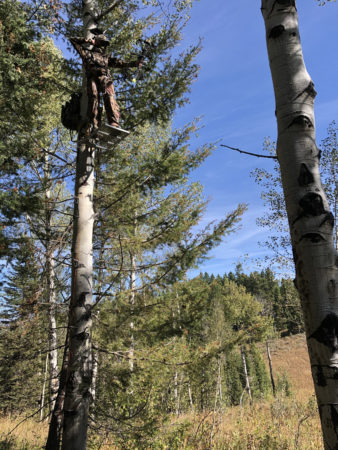The popular R-3 program — Recruit, Retain and Reactivate — is a great effort to rebuild hunting’s thinning ranks by reinvigorating efforts that began 30 years ago with wise folks like Christine Thomas.
Thomas, founder of the popular Becoming an Outdoors-Woman program, warned in 1995 that recruiting new hunters won’t be easy because the “low-hanging fruit” had long been picked. She noted there was no shortage of videos, pamphlets, seminars, magazines, newspapers and TV shows trying to “educate the public” about hunting and the outdoors.

If writing and recording were all it took to recruit, retain and reactivate hunters, the problem wouldn’t have worsened since then. After all, the internet has been booming, and information is more accessible than ever. Meanwhile, it seems harder than ever to inspire people to get outdoors, given the continuing growth of urban populations and society’s increasing need to “stay connected” through wireless communications.
Likewise, even though archery manufacturers and wildlife agencies work hard to recruit archers and bowhunters, their efforts alone can’t change the larger social forces hampering participation in outdoor recreation. A 2017 survey commissioned by the Archery Trade Association reported that the biggest limits to bowhunting activity—lack of time, age/health issues, and proximity to hunting land—can’t be controlled by agencies and organizations.
That survey generated a 250-page report called “Bowhunting in the United States: A Market Study.” The study’s researchers interviewed 2,632 bowhunters in 10 states — Colorado, Florida, Georgia, Indiana, New Jersey, Oklahoma, Oregon, Pennsylvania, Virginia and Wisconsin — to better understand modern bowhunters, their motivations, and what the future might hold for bowhunting.
What Changes are Possible?
The study noted that state and federal wildlife agencies, together with the archery/bowhunting industry, can greatly influence land access, license fees, season dates, game quantity/quality, draw odds in quota hunts, and many other factors. Unfortunately, only 6% or less of bowhunters said those specific factors were restricting their outdoor recreation.
When respondents were asked how agencies can improve those problems and encourage more bowhunting, they suggested changing season dates to make them later in the year. (Respondents often complained the weather was too hot in the season.) Bowhunters also suggested they might hunt more if they had better hunting access, increased game numbers, longer archery seasons, open Sunday bowhunting (in states that don’t allow it), and improved chances for drawing Western big-game tags.
Still others simply wished for more time and money, but seldom claimed resident hunting licenses were too expensive.

In addition, even though manufacturers steadily improve their products through innovations and technology, those factors don’t always interest bowhunters or boost sales. The survey found the No. 1 factor triggering new bow sales is when the buyer’s current bow is damaged or beyond repair. The next biggest factor, but only half as important, was capitalizing on a good price. Of “much less importance” was capitalizing on upgrades, innovations and better technology.
Therefore, whether it’s selling products or recruiting hunters, Thomas is still right: Agencies, manufacturers, and hunting organizations have addressed most of the challenges we control. Our media, innovators, advertising gurus, archery engineers, and public-outreach programs are sophisticated, comprehensive and far-reaching.
Aim Small
To keep archery and bowhunting popular and prosperous, everyone involved must become increasingly efficient at addressing the smaller factors we can influence. The ATA’s market survey had plenty of good news, after all. The 2017 study found that millennials (those born 1981 to 1996)—when compared to baby boomers (1946-1964) and Gen X-ers (1961-1981)—were most likely to shoot compound bows (92%), most likely to own treestands and ground blinds (91%), most likely to buy targets (94%), most likely to buy calls (89%), and most likely to use trail-cams (80%).
In addition, millennials have a robust outlook on hunting and bowhunting. When asked if they could participate in only one outdoor recreation the next year, millennials were more likely than baby boomers and Gen X-ers to say bowhunting (44%) and gun-hunting (19%); and less likely to say “other activity” (34%). Baby boomers, unfortunately, were most likely to say “other” (48%). If today’s grandparents aren’t hunting with their sons, daughters and grandkids, they aren’t sharing our bowhunting traditions and hunting’s rich heritage.
That doesn’t mean manufacturers, pro shops and agencies must focus all sales and recruitment efforts on millennials, and forsake baby boomers and Gen X-ers. It simply highlights that each generation has differing traits and motivations. But retailers, manufacturers and wildlife administrators who learn, respect and appreciate such nuances will more likely enjoy prosperity than those who ignore them.

After all, the survey noted this interesting fact about baby boomers: Older bowhunters participate more steadily. They go every year more often than those in other age groups. The survey noted a higher percentage of baby-boomer bowhunters bought a bowhunting license all five of the previous five years.
In contrast, the churn rate (those who hunt one year but miss the next) is higher among millennials and gen X-ers than among baby boomers.
Interestingly, however, bowhunters are more regular about hunting with a firearm and buying a firearms hunting license all five of the previous five years. Other than that, however, younger bowhunters generally show higher signs of bowhunting passion.
Agency administrators and industry members should note this finding in the survey: Bowhunters whose participation rates increased or stayed about the same in recent years participated at higher rates in a variety of hunting activities. Besides hunting whitetails, they also were more likely to have bowhunted elk, bears, moose, turkeys, small game, and mule deer in all five of the previous years.
Conclusion
These bowhunters also had bowhunted more days in the most recent season; and shot other forms of archery other than bowhunting the previous five years, such as 3D, field and target archery.
Fortunately, archery and bowhunting are fun, family-oriented activities that are easy to “play” with families and friends. In addition, their appeal has endured for centuries across many continents. That’s why many agency officials and industry chieftains remain optimistic about archery and bowhunting’s futures.

 By
By 



